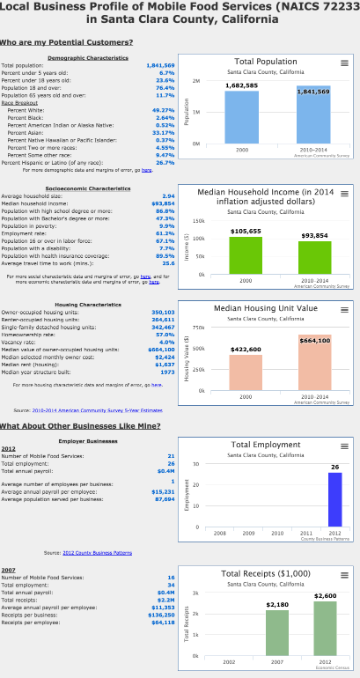Provided by My Own Business, Content Partner for the SME Toolkit
OBJECTIVE:
Before you open for business, make sure that all the elements of your business are in place. In order to do this, we have provided a “Before you start” checklist for you to review and supplement with appropriate items. You will learn how to buy, and how to market, promote, and advertise your business.
- Opening for Business
- Before you start checklist
- Marketing
- What it takes to promote sales
- What and how to buy
- How to buy checklist
- Marketing tools
- E-commerce
- Promotion and advertising
- Mailing lists
- Most Common Mistakes
- Checklist to avoid pitfalls
- Suggested Activities
- Top Ten Do’s and Don’ts
- Business Plan
Featured Video: Building Relationships and Getting the Sale
Opening for Business
First things first
An opening checklist is a great place to start. Remember that airline pilots are required to use a checklist before they take off!
Here are items you should have on your opening checklist. Add additional items that would be appropriate for your own business.
Before You Start Checklist
- Have I focused on a specific product or service? As a general rule, specialists outperform non-specialists.
- Will further specialization or focus improve my prospects for success? The more specialized, the better.
- Will my business be home-based? Online? Storefront? Franchise?
- Have I acknowledged my competition and limitations? It may be hard to compete with Wal-Mart or Home Depot. These “category killer” discount chains have powerful buying power and efficiencies of scale. Does your marketing plan serve a special niche?
- Do I understand the difference between finding a market “niche” and going against what the public wants? For example, if you build a house for sale, stick with a floor plan that most buyers are seeking rather than trying to be uniquely different.
- Do I have a one-year cash flow projection prepared to ensure there will be ongoing liquidity?
- Do I have the necessary e-commerce tools in place?
- Do I have appropriate insurance coverage in place? Are all insurance policies in force?
- Will I sell on credit and, if so, do I have a credit-rating policy in place for customers? The last thing you need is to have customers who don’t pay on time, and good customers will respect you for this policy.
- Is my business plan complete and in written format? Does it include pre-opening, first year and long-range planning? It will play a key role in securing investors and will help uncover any weaknesses in the planning process.
- Have I taken the time to gain practical job experience and learn the basics of my business by first working in the business for someone else? This is probably the best way to discover if you have made a choice that will not only be successful but also satisfying to you.
- Have I budgeted adequately for prototypes, research, sampling, and trials?
- Have I successfully test-marketed my product or service? Was the response positive? If not, you need to re-design, re-work, and re-test.
- Have I focused on selling a great product at a fair price rather than a fair product at a great price? “Great product” suggests a product or service with pricing power and “fair product” suggests a commodity-type business more susceptible to competition.
- Do I have all the communication, computer and other business tools in place? Do I have the skills to use them?
- Do you have employee policies in place that comply with local laws? For example, are you familiar with the difference between independent contractors and employees?
- Are the following elements of my business structure in place:
- Are my premises ready? This includes having a signed lease and my tenant improvements completed.
- Have all permits and licenses been secured?
- Has the business name been registered? Check with your attorney.
- Are computers, telephones, cell phones, fax, and utilities operating?
- Are graphics for advertising and promotional materials ready?
- Is the domain name registered and the Web site online?
- Is infrastructure in place for e-commerce, if appropriate?
- Are all security systems in place including protection of premises, shrinkage (theft) control and internal security?
- Have I selected and trained the number of employees I will need?
- Have I determined my personal work schedule? We recommend you maintain both daily and long term (weekly or monthly) to-do lists. Also, be sure to maintain an appointment book, such as the “Month AT-A-Glance” or google calendar book to schedule appointments.
Marketing
What it takes to promote sales
Every business has a specific marketing strategy that usually works best and has already been proven by your most successful competitors. You can benefit from their experience by copying successful marketing plans, including selling methods, pricing and advertising. Make a list of the most successful businesses that fall within your field of interest and study them (and even go to work for them). Visit these businesses and be prepared to ask the questions that are most important to you.
Learn as much as you can about the needs of your customers and how to gain feedback from them. For example, if you open a restaurant, a displeased patron will probably not complain because it is not a pleasant experience. Instead, he will not return. So, for example, you must take care to inspect the plates as they are returned to the kitchen. For an in-depth review of the importance of feedback and ways to benefit from it, review session 3 in Business Expansion, Customer Feedback.
Will your customers be looking for convenience, pricing, quality and/or service? It will be difficult to make sound marketing and promotional decisions without being informed of their real wants and needs. If a specific geographical area defines your market, free and low-cost demographic reports based on the census can be obtained that will furnish information on population by race, income and home ownership. For resources that provide this information, use Google.com to search for “demographic data.” The United States Census Bureau has a Small Business Edition that is free and can generate reports with key information pertaining to your location and type of business as seen below.

What and how to buy
Since products are changing and improving at a more rapid rate, inventory obsolescence has becomes a greater business risk. Many products, such as computers, can be obsolete the day they are purchased.
Rapid delivery firms (UPS, FedEx) and just-in-time assembly systems are great tools to use to minimize your inventories. These expanding technologies have greatly reduced the need for warehousing as well as the risk of obsolescence. And, the cash you free up can be put to uses that are more productive.
If you are selling a product, you may want to consider having the item manufactured by an outside source rather than setting up your own production facility. Many start-up entrepreneurs outsource production in order to concentrate on marketing. There may also be cost considerations because other places might be able to provide the same product more cheaply.
How To Buy Checklist
- Buy only what you think you can sell.
- Never place an order without knowing the price and the terms.
- Purchase orders must be in writing.
- Have complete specifications.
- Buy subject to your contingencies.
- Have backup sources.
- Be loyal to good suppliers.
- Have promises and extras verified in writing.
- Get price protection.
- Try to award to the lowest bidder.
- Don’t hesitate to repeatedly contact suppliers to expedite needed merchandise. “The squeaky wheels get the grease.”
- Communicate complaints quickly and respectfully
- Use internal controls for ordering and receiving.
- Count and inspect everything as received.
- Use an inventory control system.
- Ask for and take term discounts.
- Pay on time.
- Pay only after verification.
- Watch your cash flow.
- Consider suppliers as a source of financing.
- It is better to pull suppliers your way, not push them. Be pleasant.
How to go about making major one-time purchases such as fixtures, equipment, major repairs or construction needs:
- If possible, it is best to stick with suppliers within your community. Search for suppliers through the “local” feature of search engines rather than responding to large ads placed in yellow page directories. If you’re looking for an electrician, enter “electricians” in a search engine and enter your zip code for a “local” search.
- Clearly spell out in writing the scope of the work to be performed or exact description of what you are seeking to purchase.
- Let potential suppliers know that you are required to take bids on all purchases over a stated limit, say, for example, $500.
- In some cases, a supplier may be a source of financing such as in the purchase of electrical signs, fixtures or office equipment.
- A high level of negotiating skills will be a big advantage when making major purchases.
Marketing tools
Your business name will announce who you are and what you stand for. A memorable logo also adds to your marketability. It will establish your name and brand recognition. It will enhance the image you wish to create. Your logo can be used on all company materials including stationery, business cards, brochures, Web site, gift boxes and shipping containers.
A good name:
- Is easy to remember.
- Is simple to spell and pronounce.
- Clearly says what you do.
- Stirs customer interest.
- Doesn’t confuse you with a similar business.
- Has a positive ring to it.
- Evokes a visual image.
- Doesn’t limit you to a geographic location or to a product.
E-commerce
You may want to include the Internet in your Marketing Plan.
Promotion and advertising
Your advertising plan becomes your blueprint for marketing. It will include your objectives, budget, media plan and creative approach. A basic rule in promotion and advertising is, “Do what you do best, and hire for what you don’t.”
Discuss your advertising plan with your vendors. They may provide you with co-op money if you follow their rules and make proper application for the money. Even the smallest advertiser can get up to half of their advertising costs reimbursed.
There are many types of paid media to deliver your message. Here are a few of the most commonly used:
- Print (newspapers, magazines and newsletters)
- Radio
- Television, including cable
- Internet
- Yellow Pages
- Direct mail
- Trade shows
Every entrepreneur learns through experience that there is a most efficient way to spend advertising dollars. This can be hit or miss for the beginner and very costly. So, once again, learn from the previous mistakes of your competitors. Find out and follow how your most successful competitors advertise and promote their products or services.
Whatever advertising media you decide to use, become knowledgeable regarding the Do’s and Don’ts of advertising in that particular medium. For example, if direct mail works best for you, go to a search engine and research direct mail. They will provide huge insights that can save you from wasting advertising dollars.
Media publicity is free and helps to create a positive image for your business. Newspapers could be interested in writing a feature story about you because of the widespread interest in entrepreneurship and the fact that you are a successful start-up. Local newspapers, even the free ones, are very effective. Your “press release” must have news value that can be turned into a bit more of a feature story, as opposed to an announcement. This will make it more interesting and relevant to the reader. Editorial space is much more valuable to you than display space…and it’s free!
Mailing lists
Before your start your business, now is the right time to begin developing a database of future customers you wish to target. This list can be used for direct mail, invitations and newsletters. Your database could include specific individuals, companies, and groups by location. Begin now to:
- Join the Chamber of Commerce.
- Collect business cards.
- Collect names or mailing lists from your church, school, organizations and community groups.
- Get involved in your industry and community affairs.
Marketing on search engines
Utilizing your ability to register on search engines and crowd-source business review sites is an essential marking tool to capture customer leads. To learn more, see the links below:
Search Engines:
- Google My Business: https://www.google.com/business/
- Bing Places for Business: https://www.bingplaces.com/
Crowd-sourced business review sites (U.S. based):
- yelp: https://biz.yelp.com/
Most common mistakes made in opening a business: your checklist to avoid pitfall
- Haste: slow down and prepare yourself for success
- Lack of focus: specialize, specialize, specialize
- Lack of on-the-job experience
- Inadequate research and testing: test your market first
- Lack of a well thought-out, written business plan
- Lack of working capital
- Unprofessional decor, theme, logo, stationery, attire, packaging, ads, and website
- Not opening quietly to work out the shortcomings
- Poor signs: make them big, clear and readable – simple is good
- Untrained staff
- Poor relationship with vendors
- Unfocused marketing plan
- Not using the advertising media that works best for your specific business
- Skimping on insurance
- Ignoring possible problems
- Not recognizing your limitations
Suggested Activities
- Develop an email and mailing list before your start.
- Watch for growth possibilities and plan growth direction.
- Join your trade association and subscribe to trade magazines (stay current).
- Continue to review, develop and update your business plan, stating how you will market your product or service.
- Continue to develop your budget, including proposed expenses for displays, signs, advertising, promotions and online marketing.
- Begin a file for merchandising and marketing ideas.
- Take seminars and classes. Use MOBI resources.
- Read current trade magazines, papers and books. Attend openings and promotions of businesses like yours.
- Develop and maintain an employee handbook.
- Talk to anyone and everyone in your field and collect business cards.
- Prepare a plan for growth possibilities.
- List potential problems and possible solutions.
- Become personally involved in selling your product or service.
- Keep your skills and knowledge current.
- Keep a journal to record your business experiences.
Featured Video: Don’t Launch Before Understanding the Market
Top Ten Do’s and Don’ts
THE TOP TEN DO’S
- Use a “before you start” checklist.
- Focus on selling a great product or service at a fair price.
- Specialize. Specialists outperform non-specialists.
- Train your employees thoroughly in marketing skills.
- Consider outsourcing the manufacture of your product to a low-cost producer.
- Minimize inventories by a just-in-time delivery and ordering system.
- Consider your suppliers as a source of financing.
- Now, before you start, develop a database of future customers.
- Open quietly to work out the bugs before you schedule the grand opening promotion.
- Include the Internet in your marketing plans with an appealing Web site.
THE TOP TEN DON’TS
- Order from a vendor without a written purchase order outlining all terms.
- Hesitate to repeatedly contact suppliers to expedite needed merchandise.
- Launch a new product or service without test marketing it first.
- Be satisfied with unprofessional décor, logo, name, attire packaging or advertising.
- Open unless your cash flow projection is positive for the first 12-month period.
- Be in a hurry to open.
- Compete with discount chains unless you efficiently serve a specialized need.
- Fail to meet IRS rules regarding employment practices.
- Be afraid to say “no” to poor credit risks.
- Depend on your customers to complain; they just won’t come back.
Business Plan for Session Opening and Marketing
You can now continue to assemble your business plan. We provided Microsoft Word template for this section below:
The full template can be downloaded as one document:
Copyright © 1993, 1997-2016, My Own Business, Inc. All Rights Reserved.









